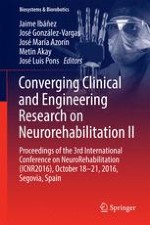2017 | OriginalPaper | Chapter
Validation of a Gravity Compensation Algorithm for a Shoulder-Elbow Exoskeleton for Neurological Rehabilitation
Authors : S. Crea, M. Cempini, M. Moisè, A. Baldoni, E. Trigili, D. Marconi, M. Cortese, F. Giovacchini, F. Posteraro, N. Vitiello
Published in: Converging Clinical and Engineering Research on Neurorehabilitation II
Publisher: Springer International Publishing
Activate our intelligent search to find suitable subject content or patents.
Select sections of text to find matching patents with Artificial Intelligence. powered by
Select sections of text to find additional relevant content using AI-assisted search. powered by
